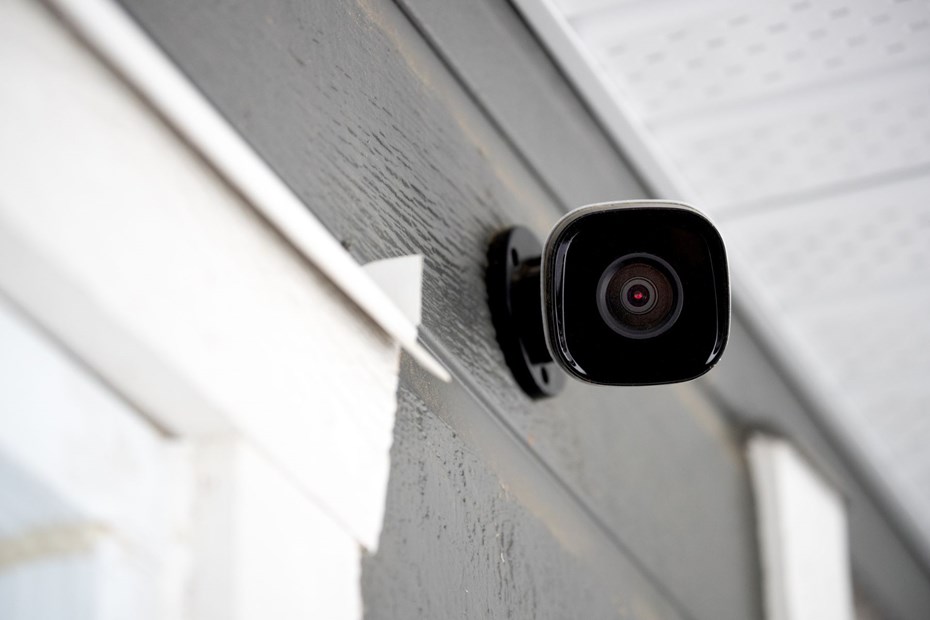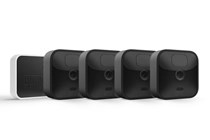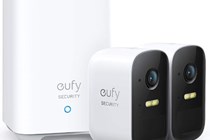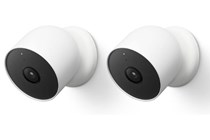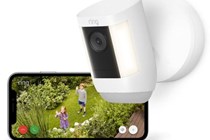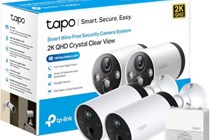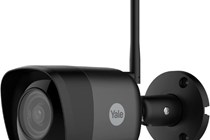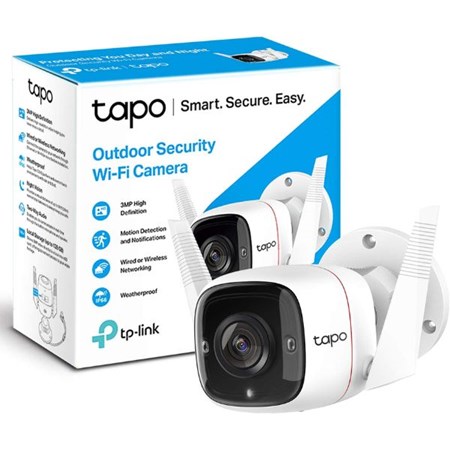One of the main tools in your garage security arsenal should be some form of visual monitoring and recording to protect the most valuable possessions you keep outside the security of your home. A motion detector spotlight or garage alarm are great deterrents, but should the worst happen, there may not be any record or evidence. With a smart security camera, you can easily link up your indoor and outdoor security, and it needn’t cost a fortune.
Not so long ago, setting up any kind of monitoring camera would have been an expensive and complicated job. Now, with giant leaps in the speed of domestic Wi-Fi and improvements in battery and solar power sources, fitting outdoor security cameras can be a quick and easy job – probably the most challenging part will be getting the ladders out to do the installation.
There are loads of different systems available, from complex multi-camera set-ups with sophisticated detectors to inexpensive stand-alone systems that will notify you on your smartphone should a visitor (welcome or unwelcome) be detected. Here are a few of the best smart security cameras around just now.
The best smart security camera at a glance:
Editor’s choice: Blink Outdoor smart security camera – Buy now from Amazon UK
Best smart security camera for battery life: eufyCam 2C 2-Cam Kit – Buy now from Amazon UK
Best budget smart security camera: Tapo 2K Outdoor Security Camera – Buy now from Amazon UK
The best smart security camera:
Editor's choice
For even greater flexibility, you can download the Blink app to your phone for monitoring and control whilst you are away from home. It also provides added peace of mind.
Pros
- Motion detection and alerts
- Weatherproof and durable
Cons
- Subscription needed for premium features
Best smart security camera for battery life
The cameras run on rechargeable batteries, and a full charge should give you up to 180 days of operation, although this will decrease if the cameras are in a busier traffic area. Another great feature is the ability to set up specific detection zones to cut down on false alerts.
Pros
- No subscriptions required
- Smart detection zones
Cons
- Battery life is reduced in heavy-traffic areas
Best smart security camera for low-light vision
There's an inbuilt starlight sensor which allows the system to capture high-quality images in low light conditions. The rechargeable batteries should last up to 180 days, depending on activity and images are stored locally on the Tapo hub, which is included in the package.
Pros
- High-quality pictures
- Local image storage
Cons
- Subscription required to receive notifications
Best hardwired smart security camera
There's also the option to connect with Alexa or Google Assistant. Cutting-edge features like 3D motion detection and colour night vision are included alongside two-way talk and motion-activated LED spotlights.
Pros
- Hardwired – no batteries required
- Up to four cameras can be added
Cons
- Requires professional installation
Best stand-alone camera
The camera needs to be powered, so you will need to take that into account when installing it, and if you wish to record images, you will need to fit a micro-SD card, although you don't need one to view the live feed on the app.
Pros
- 4MP HD Pictures
- Works as a stand-alone camera or as part of a system
Cons
- Micro SD card required for recording
Best smart security camera for flexible installation
Pros
- Magnetic mount for easy adjustment
- Part of the Google Nest system
Cons
- Nest subscription is required for premium services
Best budget smart security camera
Pros
- Great price
- No hub is required
Cons
- Sensors can be over-sensitive
Things to consider when buying a smart security camera
When buying a smart security camera, there are a few things you might want to consider so that you get the best camera to meet your needs.
Resolution and Image Quality: Higher resolution cameras provide more precise and more detailed images. Opt for at least 1080p resolution for better clarity. Some outdoor security cameras offer 4K resolution for even higher quality, but higher resolution may also require more storage space.
Field of View: The field of view (FOV) indicates how much area the camera can cover. A wider FOV is beneficial for covering larger spaces. Consider if you need a camera with pan and tilt capabilities for better coverage of a larger area.
Night Vision: Look for cameras with infrared (IR) LEDs for effective night vision.
Check the camera’s night vision range to ensure it covers the desired distance in low light or complete darkness. If not, a security light might be your next port of call.
Motion Detection and Alerts: Choose a camera with reliable motion detection that can send real-time alerts to your smartphone or email when activity is detected. Some cameras allow you to customize motion detection zones to reduce false alarms from irrelevant movement.
Two-Way Audio: Two-way audio lets you communicate with people near the camera. This can be useful for speaking to delivery people or deterring potential intruders.
Storage Options: Cameras can offer local storage (SD card) or cloud-based storage for recorded footage.
Cloud storage allows you to access footage remotely and is often more secure against camera theft or damage.
Wired vs. Wireless: Wired cameras require a physical power connection and, sometimes, Ethernet. They typically have a more stable connection but may be harder to install. Wireless cameras rely on Wi-Fi connectivity. They offer more flexibility in placement but may suffer from connectivity issues in areas with weak Wi-Fi signals.
Power Source: Cameras can be powered through mains sockets, batteries, or solar panels (for outdoor cameras).
Consider the convenience and reliability of the chosen power source.
Integration and Compatibility: Check if the camera can integrate with other smart home devices or security systems you already have. Compatibility with voice assistants like Amazon Alexa or Google Assistant can offer additional control options.
Cost and Subscription Fees: Consider both the upfront cost of the camera and any ongoing subscription fees for cloud storage or additional features.
Alex Boyd is a Commercial Content Writer at Bauer Media writing for Parker’s and CAR, and loves travel, gardening, DIY and music.
Sign up for the Parkers Newsletter to keep up to date with more of the latest reviews, news, and recommendations from the Parkers team.
Just so you know, whilst we may receive a commission or other compensation from the links on this website, we never allow this to influence product selections – read why you should trust us
Just so you know, we may receive a commission or other compensation from the links on this website - read why you should trust us.


